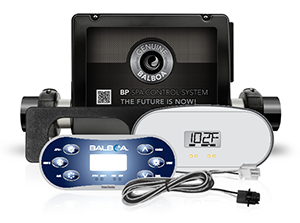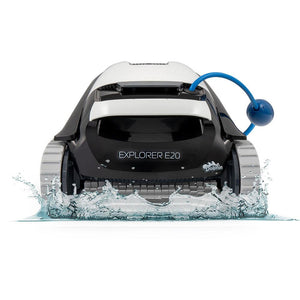Contact Us Free: (866) 316-9064
Monday - Friday
9AM - 5PM (PST)

How to Prime a Pool Pump: A Step-by-Step Guide
The last thing you want is to turn on your pool pump for a new summer, only to find it struggling to circulate water. This common problem affects many pool owners, but how can you avoid it?
Priming a pump is an important step when first preparing your pool for a new year. Read on to learn how to prime a pool pump and avoid this issue in the future. As you scroll down, pick up practical insights and tips to ensure you can enjoy a clean, efficient pool all year long.
Why Understanding How to Prime a Pool Pump Is Important
The operation of the pool pump is the lifeblood of an enjoyable pool experience. Without priming it, the pump may not be able to circulate water as it should, and this could impact the pool's safety. In addition, neglecting to inspect and prime the pump could result in damage, necessitating costly repairs.
So, prime this device the right way to filter and sanitize your pool, protect those who use it, and save you money.
Why Water Circulation Is Imperative
As water moves through the pool and pump, small pieces of debris and other contaminants will circulate. With a clean filter, you can ensure these small pieces of unwanted material no longer impact your pool's cleanliness.
Another benefit to circulation is the fact that moving water circulates heat better. If you only heat one area of the pool, the water will not flow well, leading to hot and cold spots, as well as uncomfortable swimmers.
Initial Inspection After Pool Maintenance
Before you do anything else with the pump, make a full visual inspection to check for any obvious damage. Any wear, cracks, or leaks will mean you need to make repairs before turning it on.
You should also ensure:
- Electrical connections are safe and undamaged
- Pool water levels are high enough for pump circulation
- The pump basket is clear of debris or pool accessories
- Any settings in the pump align with your pool's needs
While we will explore some of these in more detail later, it is essential to examine every part of the pump before activation.
Choosing the Right Pool Pump for Your Pool
If you have changed your pump or altered your pool between seasons, make sure your pump still matches its needs. Try to match your pump's manufacturer's recommendations when it comes to your pool's volume. This will ensure it circulates water efficiently.
Also, make sure your pump is compatible with things like your pool's filtration and heating systems if you have changed these.
Ensuring Robust Pool Parts for Priming
Ensure that the hoses and connectors for your pump are in good condition. You do not want any water or air leaks to occur in your system, as this will impair water flow. Also, inspect the O-rings and gaskets on your system to maintain an airtight seal.
As well as clearing the strainer basket, you also want to check it remains undamaged and clean. This will filter out the largest of the debris the pool might accumulate.
The Role of Chemicals in Swimming Pool Care
One of the things a pump does is disperse cleaning products into the water. In doing this, it:
- Balances pH levels
- Prevents Algae Growth
- Enhances the effectiveness of chlorine
- Protects the pool and its contents
As such, check the pump's recommendations on chemical products you should use and ensure you follow their directions.
Filling the Pump With Water
Slowly remove the pump lid, then use a hose or bucket to fill the pump basket with water until it is full. When you do this, also check for any air bubbles or sudden drips from the side, as these will suggest leaks exist.
Once you have filled the basket, replace the pump lid and secure it to ensure it remains airtight.
Sealing the Pump
Apply lubricant to the O-rings on the pump to ensure a smooth, airtight seal, then close and tighten the lid evenly. Look around its edge to check for visible gaps, then run a brief cycle to check for air leaks around the lid and seal.
Securing the Pump For Optimal Performance
Make sure the device is on a stable and level surface. Doing this will reduce the vibrations, and thus noise, the pump generates.
When it runs, check the device's gauge readouts to ensure water pressure is constant, adjusting its settings if necessary. You will want to make regular inspections of these while the pump is in use to check for performance issues.
Regular Pool Pump Maintenance
Make sure to maintain your pool's integrity. Take the following actions once every month to maintain high performance and make sure the pool stays safe for all users. In some cases, you may need to do these more often:
- Clean the pump basket and surrounding area
- Inspect the pump for damage or wear
- Lubricate all moving parts in the pump
In some cases, calling in a professional to service the pump can ensure optimal performance. They may also be able to notice problems you would not have seen.
Problems During Priming
Ensure you check the manufacturer's instructions if you start to have problems with your pump. The following are some of the more common issues you might encounter:
- Air leaks impacting your pump's output
- Blockages or pump damage
- Electrical problems
Some of these are simple fixes, and instructions for how to resolve them can be found in your user manual. With electrical problems, though, it may be safer to call a professional.
Where to Get the Right Tools
Now you have read this guide, it is important to remember that knowing how to prime a pool pump will ensure both a clean and safe experience. Here at Pool Store Canada, we commit to ensuring you can enjoy your time in the water without worrying about how efficient your equipment is.
We have everything you need, from high-quality pumps to lighting and even pool games. Our staff are also ready to answer any questions you have. So visit our location or explore our online store today to get a head start on next year's summer fun.



